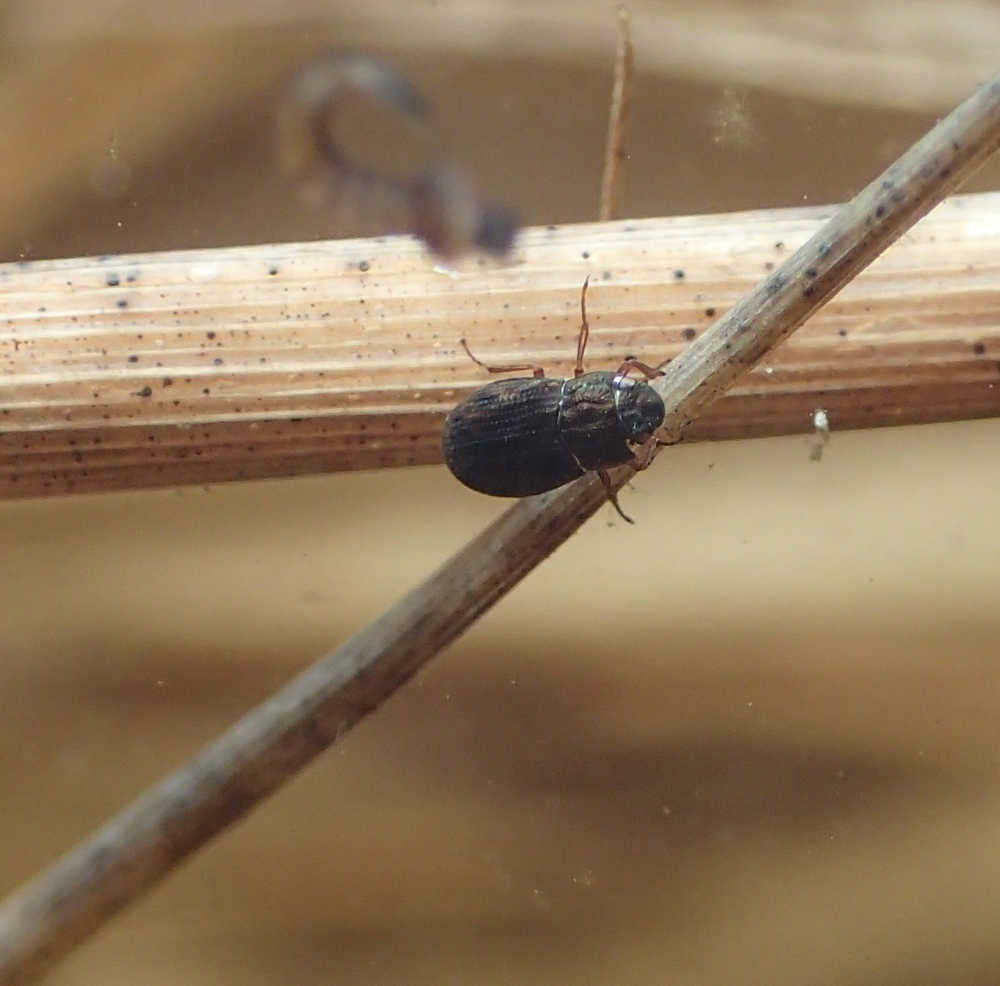As a child I could often be found poking around in water bodies of any size fascinated by the myriad of strange invertebrates frantically going about their brief lives. The small field guide, “A Golden Guide: Pond Life,” with its simple illustrations and brief accounts of amazingly diverse living things, inspired me to go out and see what I could find. I still enjoy doing this.
In our area, now is the time to visit snowmelt pools, also known as vernal pools, depressions that temporarily fill with water in the spring and then dry up in the summer. The absence of all fish — even the seemingly ubiquitous sticklebacks — means that invertebrates dominate these little systems.
Vernal pool communities can be amazingly busy and diverse including mosquito larvae, caddisflies, midge larvae, water beetles, water striders, water boatmen, small crustaceans, fishing spiders, worms, and seed clams. At times I have seen pools rippling with so many invertebrates that the whole water body seemed to be moving, the perception of movement and life being obvious even at some distance.
Many insects can inhabit these temporary pools on a temporary basis. Diving beetles, usually the top predators of vernal pools, can overwinter in permanent ponds, then fly long distances in the spring looking for suitable water bodies. As these dry up, the beetles can again take to their wings in search of wetter homes.
Diving beetles appear to have difficulty distinguishing between water and artificial dark objects like car windshields and especially trampolines, closing their wings in mid-air and diving in. I think every kid who has spent much time on a trampoline in the summer around here can attest to this phenomenon.
The most abundant species of mosquitoes in vernal pools survive the winter as eggs. When these are immersed in melt water, the eggs hatch and the larvae begin feeding and growing, often while there is still snow on the ground. By May the adults emerge and are among our most numerous and annoying mosquitoes in May–June. Successful females, after having fed on their preferred mammalian blood and gestating, will seek dried-out vernal pools where they will deposit their eggs.
Fairy shrimp, my personal favorite inhabitants of snowmelt pools, look to me like creatures that belong in the plankton of the Antarctic Ocean. There is something mesmerizing about the way they swim slowly upside-down through the water with rhythmic beating of their many appendages.
Fairy shrimp specialize in temporary pools where they feed mostly on algae. Pools I checked this week contained immature fairy shrimp. They should be maturing in the next week or two, producing durable, encysted eggs, then disappearing until next spring. The eggs actually hatch within the cysts over the winter so that the young shrimp will be ready to emerge quickly as soon as the ponds fill with water.
These durable fairy shrimp eggs also serve as a way for the shrimp to get from one pool to another similar to the way that blueberry seeds get around via bears. Bears generally do not chew berries, so the seeds remain intact. Their germination rate actually increases after having passed through the bears. Similarly, when trout and diving beetles consume fairy shrimp eggs or even whole female shrimp containing mature eggs, at least some of the eggs pass through the predators unharmed and may be carried long distances while in the digestive tracts of their hosts.
I encourage you, especially families with children, to visit some local vernal pools and see what you can find before they dry up. When you get there, approach slowly, look closely, and be still for a while. You will notice many more minute animals like copepods and water mites simply by being patient and having a good look. No fancy tools are required, but little scoops, fine-mesh nets, and shallow trays are useful. Fine sieves and filters will enable you to find more of the smaller animals. If you have access to a microscope, do have a look at some pond water and algae. You will be amazed at the quantity and variety of living things that you will see.
Matt Bowser serves as Entomologist at the Kenai National Wildlife Refuge. You can find more information at http://www.fws.gov/refuge/kenai/ or http://www.facebook.com/kenainationalwildliferefuge.

